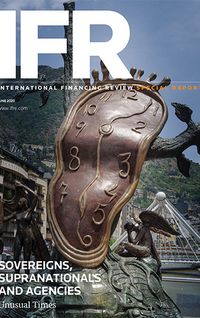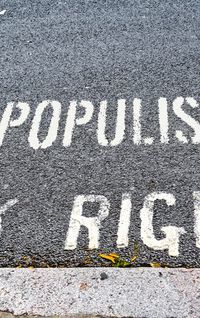Social bonds have taken centre stage in the public sector response to the brutal economic fallout from the Covid-19 onslaught. The need for affected countries to fund their response via capital markets is pressing, in particular in the developing economies of Asia-Pacific, and yet issuance from the region has been tellingly muted.
Since the advent in March of the “Covid era” - which looks likely to last for a considerable time, barring the emergence of a reliable and safe vaccine - SSAs such as International Financing Corporation, African Development Bank, Nordic Investment Bank, European Investment Bank, Cassa depositi e prestiti, Bpifrance, Caisse Francaise de Financement Local and Instituto de Credito Oficial have issued social bonds in US dollars and euros in response to Covid-19, totalling US$9.4bn-equivalent.
But within the Asia-Pacific region, much of the SSA funding response to Covid-19 has been in the form of special lending facilities, with the oft-repeated argument now bandied around the market being that the potential issuers lacked the framework and diligence procedures required to be in place for issuance in the format.
Nevertheless, there is no doubting the emergence of a powerful asset class which was displaying an expansionary dynamic even before the emergence of Covid-19 and which is likely to grow from within Asia as lenders complete the necessary due diligence for the product that has up until now been sorely lacking.
The middle of last year marked the start of a rising dynamic for the social bond market, as signs emerged of portfolio building at dedicated social bond funds, albeit with the process hindered by a lack of supply and underlying concerns about thin liquidity and blurry reporting standards.
At the same time, a constraint on market growth has been the relative paucity of tangible projects to fund via social bonds. But the onset of Covid-19 has brought a vast array of potential projects to the fore as the economic fallout from the virus bites.
“The real problem is a lack of supply but that will change. DCM teams in the region increasingly are staffed with sustainability experts who are actively pitching treasurers on sustainability bonds - whether in green or social bond format, or a combination of both in terms of use of proceeds - and persuading them that the diligence process and use of third party opinions is worth it,” said Mushtaq Kapasi, head of Asia at the International Capital Markets Association in Hong Kong.
Within the arena of the global sustainable bond market - comprising green, sustainability and social bonds (GSS) - social bonds accounted for a 28% share last year, via issuance of US$13.1bn, according to data from Refinitiv.
Asia-Pacific accounted for 20% of the GSS total last year, with US$10bn of issuance of which US$1bn in social bonds was SBP-compliant. Amid the surge in GSS bonds so far this year globally, to US$104.7bn, APAC accounted for US$7.4bn, or just over 7% of the market, of which US$2.6bn was in social bonds.
While within the GSS sector, for green bonds the buying proposition is more clear-edged and compelling than that for social bonds, driven as it is by concerns about global heating, climate change and the strictures of the Paris COP 21 Climate Change Agreement.
“Social bonds in Asia can really help address the socioeconomic fallout in Asia from the Covid-19 onslaught, especially for the less developed countries in the region. Under the Social Bond Principles, social bonds are rigorous financial instruments that require preparation and clear commitments to meet the standards of the investor base for the product,” said ICMA’s Kapasi.
ICMA’s Social Bond Principles (SBP), updated as of June 2018, promote, according to the organisation’s website: “integrity in the social bond market through guidelines that recommend transparency, disclosure and reporting. They are intended for use by market participants and are designed to drive the provision of information needed to increase capital allocation to social projects”.
The SBPs delineate issuers’ obligations, including such inputs as project evaluation and selection, the use and management of proceeds and ongoing reporting, ticking the boxes for asset managers whose fiduciary duties have been fully aligned with environmental, social and governance objectives.
Prior to the Covid era, social bonds had been used to fund a range of projects, including infrastructure, employment generation, housing and social services.
SHARPENED FOCUS
But the emergence of Covid-19 has sharpened the focus of targeted projects from the purchase of medical equipment and the reconfiguration of manufacturing facilities to enable the production of equipment essential to mitigating the spread of the virus and treating its effects, to supporting companies - particularly small and medium-sized enterprises - financially so that they can retain staffing levels.
The most explicit SSA response in terms of public offshore bond issuance to Covid-19 has been provided by the Asian Infrastructure Investment Bank and the Republic of Indonesia, although in both cases issuance did not strictly adhere to the social bonds rubric. In the former case a deal emerged under the AIIB’s sustainability bond criteria, while in the latter it was simply stated that use of proceeds would go towards Indonesia’s Covid-19 response.
On May 20, AIIB priced a US$3n, five-year sustainable development bond in the context of its Covid-19 crisis recovery facility (CRC) earmarked to total US$5bn-$10bn. The bond was sold to 70 investors globally, with proceeds to be included in the ordinary resources of AIIB - the bank’s financings, including the CRC, are funded out of these ordinary resources.
Critics of the AIIB’s set-up have suggested that more funding should have been provided for the facility via the public bond markets in order to disintermediate funding sources away from the bank’s balance sheet and into private sector capital.
Further barbs emerged when market players viewed the result of the sustainable bond as being somewhat underwhelming as pricing failed to equal the tight levels of the AIIB’s multilateral peers - in the rarified zone of MDB pricing, a few basis points is seen to have been a miss.
It must be remembered that the AIIB is still earning its chops in the primary market for MDB debt, having been established as recently as early 2016, with China as the major shareholder and as an institution faces the politically inspired nuances of the US and Japan declining to join its roster of shareholders, which potentially crimps its universe of primary market investors to below that of its multilateral peers. Chatter that it deploys less than stringent lending standards also hovers around the bank.
“ESG factors are fully integrated in all of AIIB’s decision-making processes, especially when it comes to our financing activities,” said Domenico Nardelli, AIIB treasurer, and Martine Mills-Hagen, the bank’s head of funding.
“As the sustainable finance market develops, we place an increasing role in incorporating ESG into our funding programme as well. By saying all of our bonds are sustainable development bonds, we are making a commitment to provide higher transparency to investors on ESG aspects, from the use of proceeds, project approval, to reporting on the environmental and/or social benefits of our projects”.
For social bond pedants, who require issuance in the format to be strictly in accordance with ICMA's SBP 2018, the aforementioned two deals did not tick the social bond box.
However, market players suggested the key takeaway from the deals was that the demand in each case would be almost exactly replicated were the issuance to have come under the SBP, even if in the case of Indonesia the ESG premium would have meant modest pricing through the sovereign’s curve.
FIG FIRST
Still, it can easily be argued that in the case of SSAs both within and focused on Asia, where the social bond market is nascent and likely to grow in the face of a pressing need to respond to the Covid-19 fallout, these powerful borrowers have a duty to provide appropriately priced benchmarks which meet the stringent criteria which will be essential for the dynamic growth of the social bonds asset class. So far, that job in Asia has fallen into the hands of the FIG arena.
Issuance from APAC which met the SBPs has emerged from the financial sector, first via a US$638m-equivalent dual-tranche senior social bond (denominated in Hong Kong dollars and Macanese Patacas) from Bank of China’s Macau branch - the earliest response to the Covid-19 threat - with proceeds designated to allow small and medium-sized enterprises hit by fallout from the virus to access financial resources and reduce financing costs. The deal represented the first social bond from a Chinese issuer in the public offshore markets.
And in what offered the possible shape of things to come for social bond issuance from Asia, the deal’s local currency format offers a welcome departure from reliance on US dollar issuance and the double mismatch risk it presents - something of which Asian issuers must be wary in the light of the salutary experience of the region’s financial crisis more then 20 years ago.
Then Kookmin Bank in April issued US$500m of social bonds to fund loans to SMEs, small offices and home businesses (SOHOs) likewise hit by the Covid-19 fallout, to register South Korea’s first publicly placed offshore social bond. Around the same time, South Korea’s Shinhan Bank placed a US$50m bond in private format to alleviate the Covid-19 fallout pressure on SOHOs.
Both deals met what is the required gold standard for social bond issuance - meeting the SBPs and utilising a third-party verifier to ensure that the use of proceeds funds relevant projects with real social impact benefits.
The BoC Macau deal availed the services of Ernst & Young’s international certification agency to conduct “Social Responsibility Certification” for the range of facilities to be funded by the bond, including the “SME Anti-Epidemic Assistance Loan,” the “Branch Building Mortgage Assistance Programme” and “Branch Charity Fund Custody Service”.
China has also seen the emergence of domestic bond issuance linked to the Covid-19 response, with Sustainanalytics reporting last month that some 25 Chinese companies have issued “virus response bonds”, although these do not conform to the strict SBPs. Prior to the Covid era, just two sustainability bonds had priced from the country, while the only social bond - classified as a social impact bond - was a deal from Beijing Infrastructure Investment which was issued last September.
Meanwhile, Kookmin’s social bond straddled both the green and social eligibility categories, in sustainability format, with funds used to refinance new and existing projects in accordance with the bank’s sustainable financing framework.
Asia’s corporate sector has also ticked the ICMA compliance box, with India’s Shriram Transport - the country’s largest asset financing company - issuing a US$500m Reg S/144A social bond in January, with proceeds aimed at boosting employment via SME funding.
All three deals illustrate the fact that the basic investment “narrative” of social bonds belongs to the burgeoning ESG fixed income asset class, and that although issuance in social bonds is rising in response to Covid-19, the investor base for the product tends to place it within the suite of sustainability rather than as a discrete asset class.
In other words, the pricing discipline for social and green bonds is broadly the same as is the demand source for both forms of issuance, and in both cases, book cover for these products increasingly outstrips that seen for conventional bond issuance. Broadly speaking, issuance in both is designed to meet the United Nations’ Sustainable Development Goals.
SPREAD CONSIDERATIONS
There is a compelling explanation for the relative paucity of social bond issuance from APAC. “A key factor behind the relatively low issuance in the social bond format out of Asia despite the economic fallout in the region from Covid-19 is the reluctance of the region’s issuers to price at what are historically wide spreads,” said Chaoni Huang, head of sustainable capital markets APAC at BNP Paribas in Hong Kong.
“We have seen overall G3 bond issuance in the region decline by around 11% this year, whereas in the US and Europe it has surged by around 180% and 135%, respectively. In Asia, pricing levels are the reason for this relative underperformance in volume terms in the current situation.”
Indonesia’s US$4.3bn SEC-registered three-tranche deal - the sovereign’s biggest - displayed no such blanching at pricing terms, with the treasury team deciding in early April, as Covid lockdowns were multiplying across APAC, to print at 10 and 30-years some 100bp and 70bp back of where the issuer came with a Global in January. There was the added twist of a 50-year piece - the longest tenor yet to emerge from Asia’s public primary bond market since 1997.
While not strictly a social bond, the specification that proceeds would be used to fund the country’s Covid-19 response attracted an investor base that bankers involved said would have been pretty much identical to that for a social bond from the sovereign, even if the modest new issuance premium which applies to primary sustainability paper versus conventional had been on offer.
“The key variable for investors remains the credit of the issuer, and although we tend to see greater book cover for sustainability issuance versus conventional, the pricing premium achieved in the format format is still only around a maximum of 5bp,” said BNP Paribas’ Huang.
Still, Indonesia’s trade poses the counterfactual question as to whether a social bond could have been issued by the sovereign in such ultra-long tenor format. The product’s tenor is naturally restricted given its typical attachment to projects sitting on a relatively short timeline with measurable objectives set for within that period.
“There is no way Indonesia could have printed at such a ultra-long tenor in pure social bond format. There would be a mismatch with the underlying projects,” said a Hong Kong-based DCM banker.
NOT TOO SHABBY
Meanwhile, overall, the response to Covid-19 from Asia-focused MDBs has by no means been shabby, even if it has been centred on socially focused lending programmes rather than bond issuance.
“Asia-centric multilateral development banks have responded on a timely basis. On the funding side, although social bonds are an ideal channel to raise funds for Covid-19 alleviation, it is not the only way, in particular when it finances or refinances social assets for health care and medical assistance or loans to SMEs affected by the outbreak,” said Dominique Duval, head of sustainable finance at Credit Agricole in Hong Kong.
“The key is to balance between providing timely financing and transparency on the use of proceeds and the social and environmental impact of the underlying assets.”
The Asian Development Bank also stepped up with a hefty US$20bn Covid response package for its developing member countries to counter the severe macroeconomic and health impacts of the virus. At the same time, the New Development Bank launched a Rmb7bn (US$981m) 'Emergency Assistance Program in Combating COVID-19' as emergency assistance to China.
Still, it would be true to say that disintermediation from big loans programmes - even if they are able to deliver rapidly the urgently required funding to meet the Covid-19 economic decimation - must be part of the playbook, in order to spread risk and focused action away from the public to the private sector.
And as the social bond market develops in the Covid era, there is a need to revisit the old trope from the Asian financial crisis of addressing the currency mismatch which underpinned that crisis. In other words, local currency funding must be sought as the product develops and the coronavirus story continues to play out with its attendant economic damage.
The ADB, which has not formally issued an SBP-compliant bond but which has continually issued “theme bonds” for the same purpose, is a leading candidate to develop the local currency social bond market within Asia.
“The challenge with issuing local currency social bonds in response to the pandemic is that the emerging and frontier local currency bond markets suffered an investor hiatus from March this year amid a broad flight to quality and cash,” said Jonathan Grosvenor, head of treasury client solutions at the ADB in Manila.
“Although central banks have loosened monetary policy (which makes bond prices rally), this has been accompanied by ratings and outlook downgrades which tend to keep foreign investors away.”
To see the digital version of this report, please click here
To purchase printed copies or a PDF of this report, please email gloria.balbastro@refinitiv.com
![]()




























